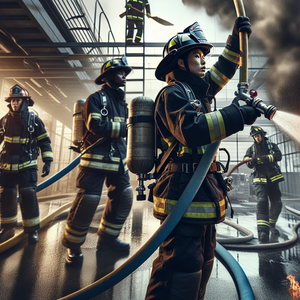Bridging Realities: The Role of VR in Education

Virtual reality offers an immersive learning environment that traditional teaching methods often fail to provide. By transporting students to different settings—be it the surface of Mars, the depths of the ocean, or the historical battlegrounds of ancient civilizations—VR enables learners to experience subjects firsthand rather than merely reading about them. For instance, platforms like Google Expeditions allow students to embark on virtual field trips, exploring landmarks and ecosystems without leaving their classrooms. This kind of experiential learning fosters engagement and curiosity, key components in the educational process. Moreover, VR can simulate real-world scenarios that are otherwise difficult to replicate in a classroom setting. Medical students can practice surgical procedures using VR simulations, allowing them to gain hands-on experience in a safe environment. Companies like Osso VR provide immersive surgical training modules that have been shown to improve retention and performance in actual procedures. This application of VR not only enhances skill acquisition but also builds confidence in students before they enter practical situations, thereby improving their preparedness for real-world challenges.
Creating Engaging Learning Experiences
The potential for VR in education extends beyond traditional subjects. Language learning, for example, can benefit significantly from immersive environments. Programs like ImmerseMe allow students to practice conversational skills in realistic settings, interacting with virtual characters and scenarios that enhance language acquisition. This kind of contextual learning is crucial; it helps students grasp not just vocabulary and grammar but also cultural nuances and conversational dynamics. VR can also cater to diverse learning styles. Visual learners may find traditional textbooks challenging, but through VR, they can see and interact with 3D models, making concepts more tangible. Kinesthetic learners benefit from hands-on experiences that allow them to manipulate objects and understand their properties. This adaptability makes VR an invaluable tool for educators striving to meet the needs of all students.
Skills Needed for VR Content Development in Education
As the demand for VR educational content grows, so does the need for skilled developers who can create these experiences. Aspiring VR content creators should be familiar with various technical skills and tools, including: 1. **3D Modeling and Animation**: Understanding software like Blender or Maya is essential for creating realistic and engaging environments. This skill allows for the design of immersive worlds that enhance the learning experience. 2. **Programming Languages**: Familiarity with languages such as C# or C++ is crucial for developing interactive elements within VR applications. These languages enable developers to implement functionalities that make VR experiences responsive and engaging. 3. **User Experience (UX) Design**: Knowledge of UX principles ensures that educational VR experiences are intuitive and user-friendly. A well-designed interface can significantly impact a student’s ability to navigate and benefit from the VR content. 4. **Storytelling**: The ability to weave narratives into educational content can significantly enhance engagement, making learning both informative and enjoyable. Effective storytelling helps students connect emotionally with the material, leading to better retention. 5. **Collaboration Skills**: Working alongside educators and subject matter experts is vital to ensure that the content is not only entertaining but also pedagogically sound. Collaboration fosters the creation of relevant and impactful educational experiences.
Virtual reality holds immense potential to revolutionize education, providing immersive experiences that engage and inspire learners. As VR technology continues to evolve, it will become imperative for educators and content developers alike to harness its capabilities to create effective learning experiences. By developing the technical skills and creative approaches necessary for VR content development, the next generation of educators can bridge the gap between traditional learning methods and the innovative educational landscape of the future. As we stand on the brink of this exciting transformation, it is clear that VR is not just a passing trend; it is a powerful tool that can reshape the way we teach and learn.
VR Educational Content Developer
Nearpod, ClassVR, Osso VR
Core Responsibilities
Design and develop immersive VR learning experiences tailored to educational curricula.
Collaborate with educators to ensure content aligns with learning outcomes and pedagogical best practices.
Conduct user testing to gather feedback and iterate on designs for improved engagement and effectiveness.
Required Skills
Proficiency in 3D modeling software (e.g., Blender, Maya) and programming languages (e.g., C#, C++).
Strong understanding of user experience (UX) design principles.
Ability to integrate storytelling techniques into educational content.
VR Simulation Engineer
Boeing, Siemens, medical training firms
Core Responsibilities
Develop realistic simulations for training purposes in fields such as healthcare, aviation, or engineering.
Use physics engines and programming to create accurate representations of real-world scenarios.
Collaborate with subject matter experts to ensure simulations meet industry standards and training requirements.
Required Skills
Experience with simulation software and development environments (e.g., Unity or Unreal Engine).
Understanding of physics and engineering principles relevant to the simulation domain.
Strong problem-solving skills and attention to detail.
Educational Technology Specialist
School districts, universities, educational non-profits
Core Responsibilities
Evaluate and implement new educational technologies, including VR, to enhance learning experiences.
Train educators on the integration of VR tools into their teaching practices.
Assess the effectiveness of technology in meeting educational goals through data analysis and feedback.
Required Skills
In-depth knowledge of educational technology trends and best practices.
Strong communication and training skills to engage educators and stakeholders.
Experience with data analysis tools to measure technology impact.
User Experience (UX) Researcher for VR
EdTech companies, VR startups, research institutions
Core Responsibilities
Conduct user research to understand the needs and behaviors of learners using VR applications.
Analyze data to inform design decisions and improve user interfaces and interactions.
Collaborate with designers and developers to create user-centered VR experiences.
Required Skills
Proficiency in UX research methodologies, including usability testing and user interviews.
Strong analytical skills to interpret qualitative and quantitative data.
Familiarity with prototyping tools and UX design principles.
VR Instructional Designer
Educational institutions, corporate training departments, content development agencies
Core Responsibilities
Create instructional materials and VR-based courses that facilitate effective learning outcomes.
Collaborate with educators to align VR content with curriculum standards and learning objectives.
Evaluate and revise instructional materials based on learner feedback and assessment data.
Required Skills
Expertise in instructional design frameworks and theories (e.g., ADDIE, SAM).
Familiarity with e-learning authoring tools and VR development platforms.
Strong writing and storytelling skills to create engaging educational content.


